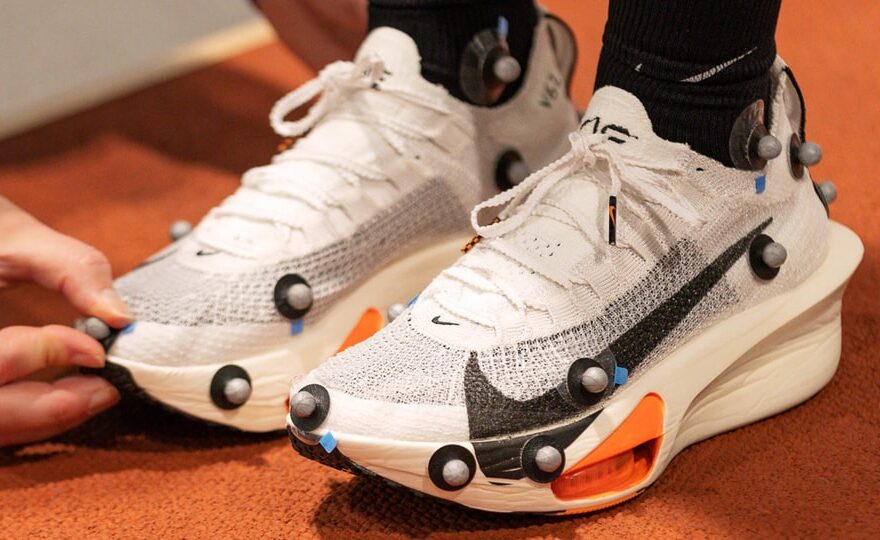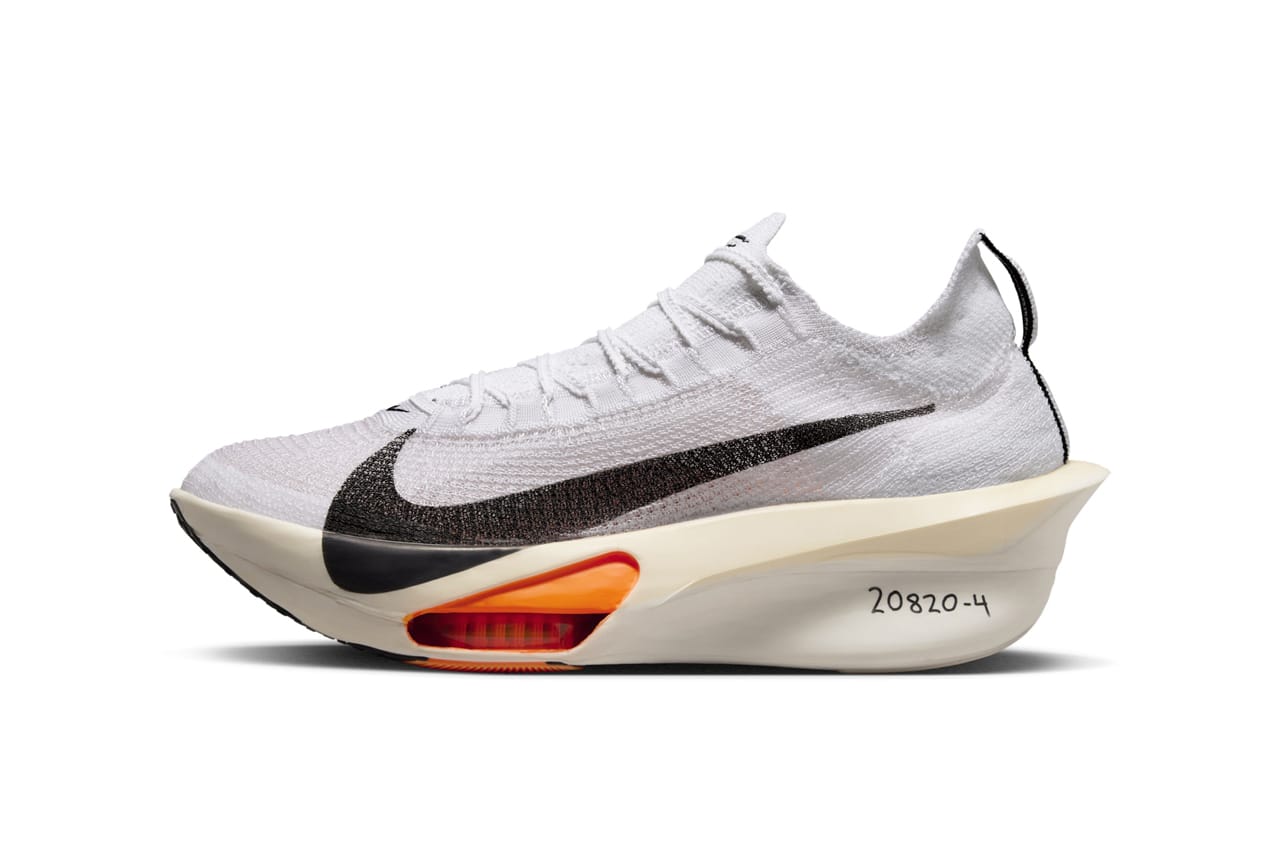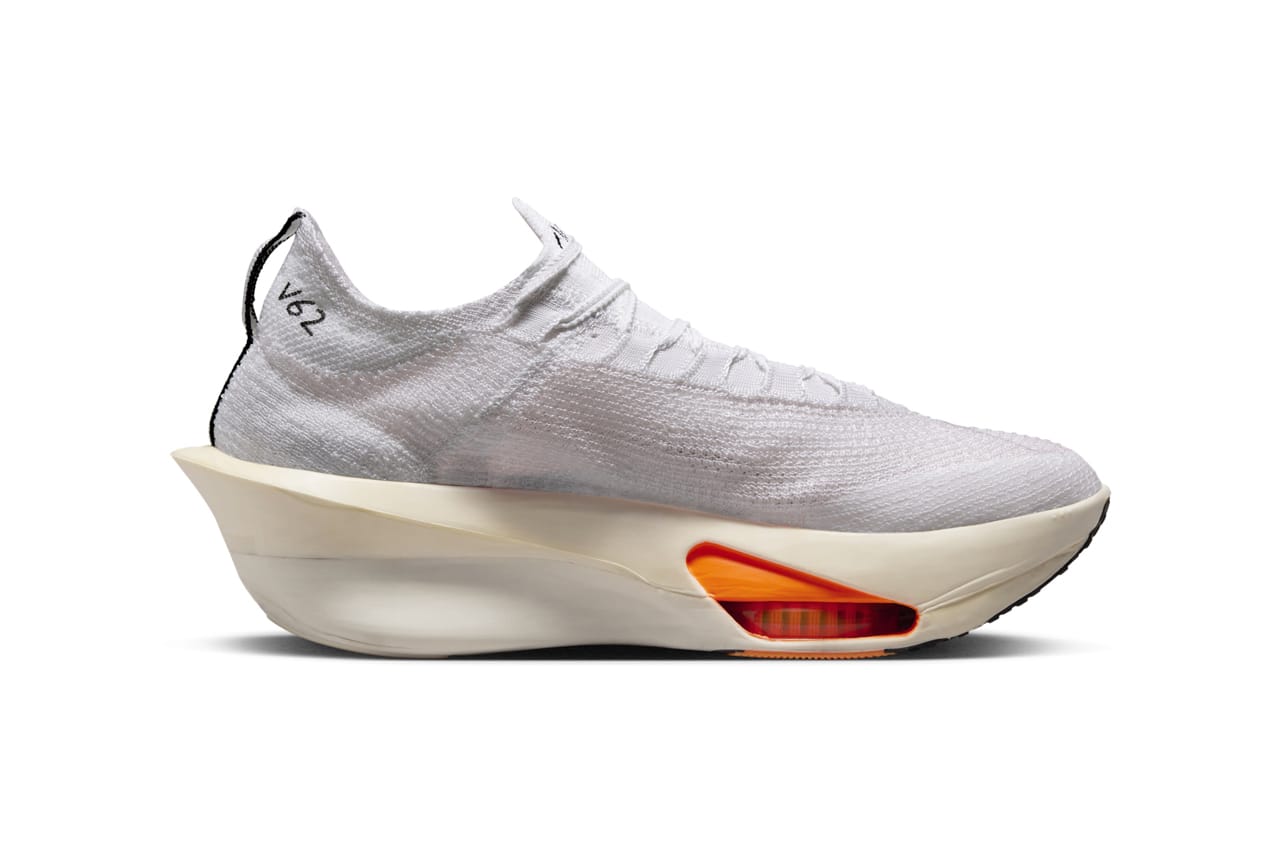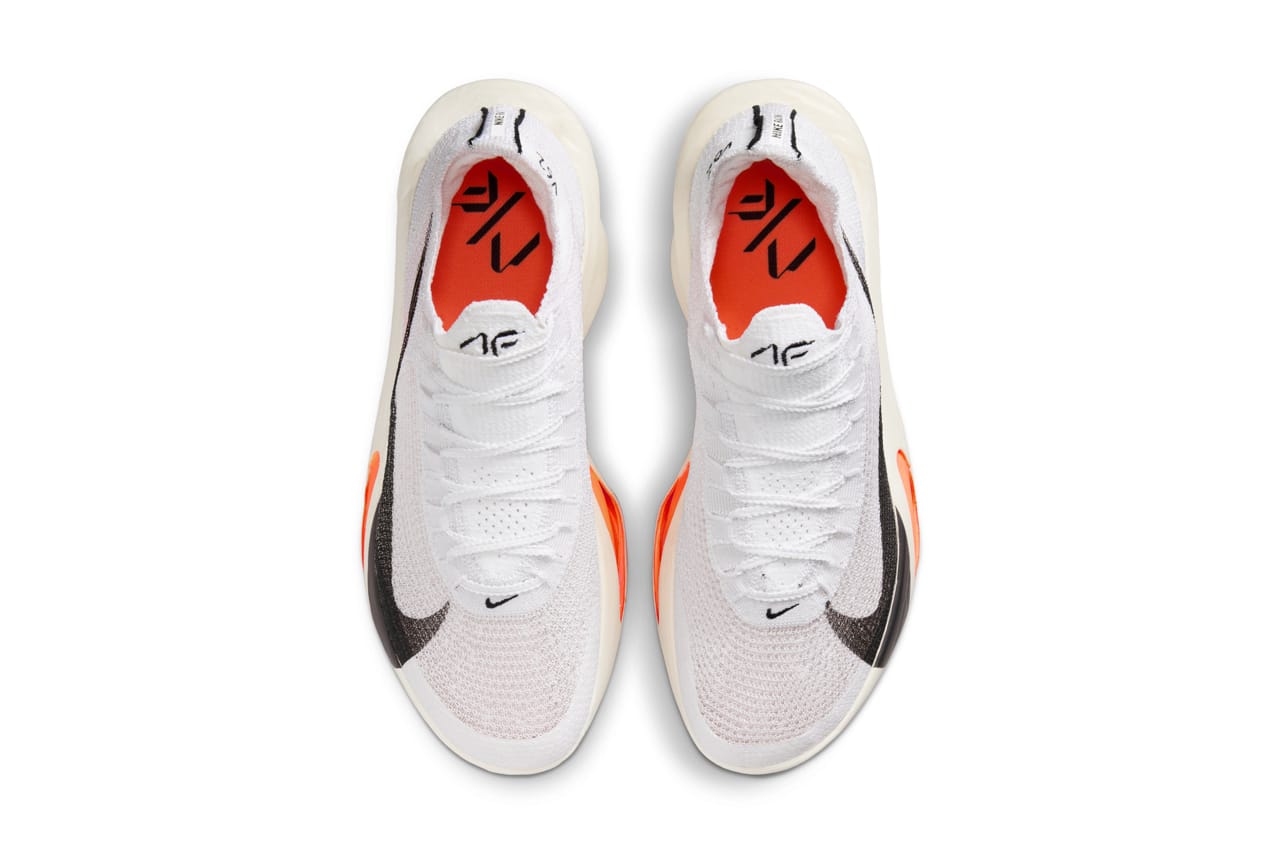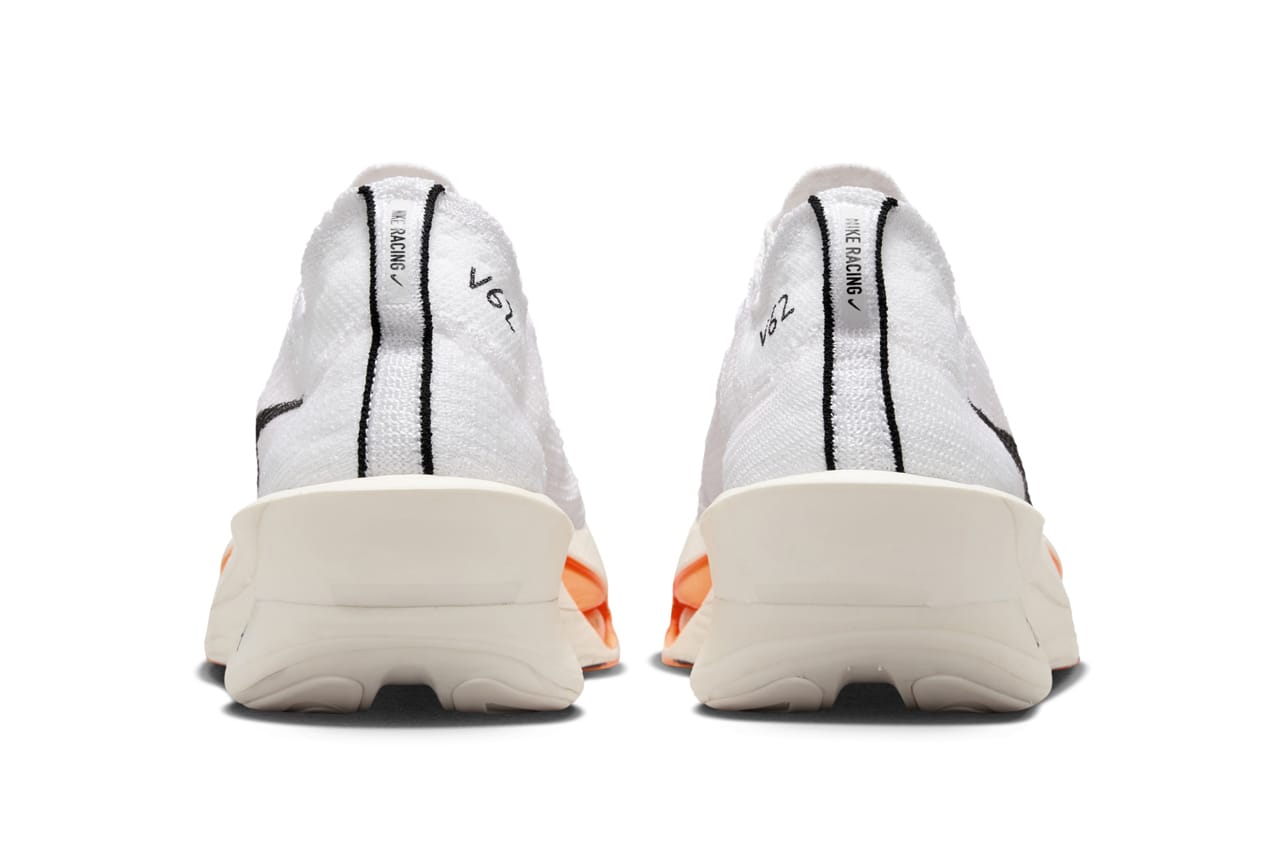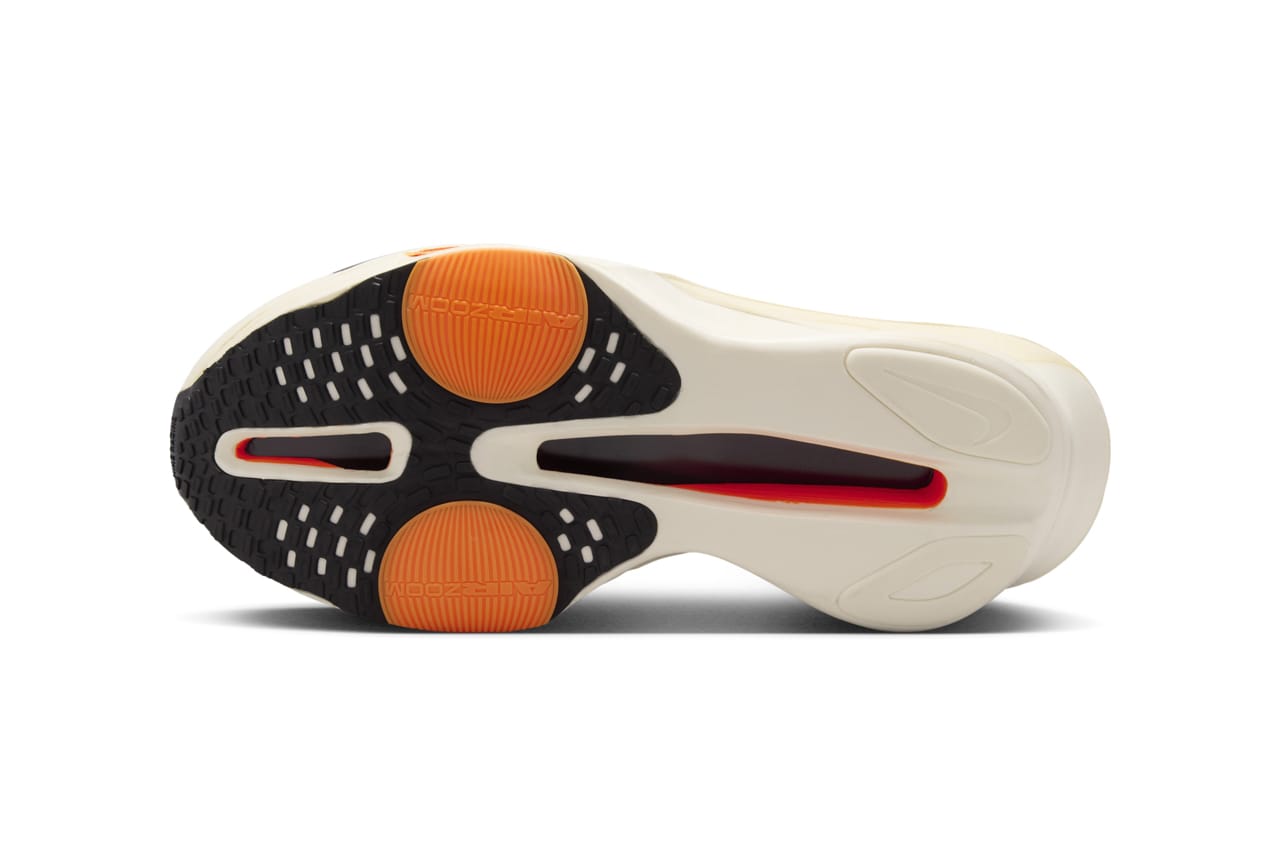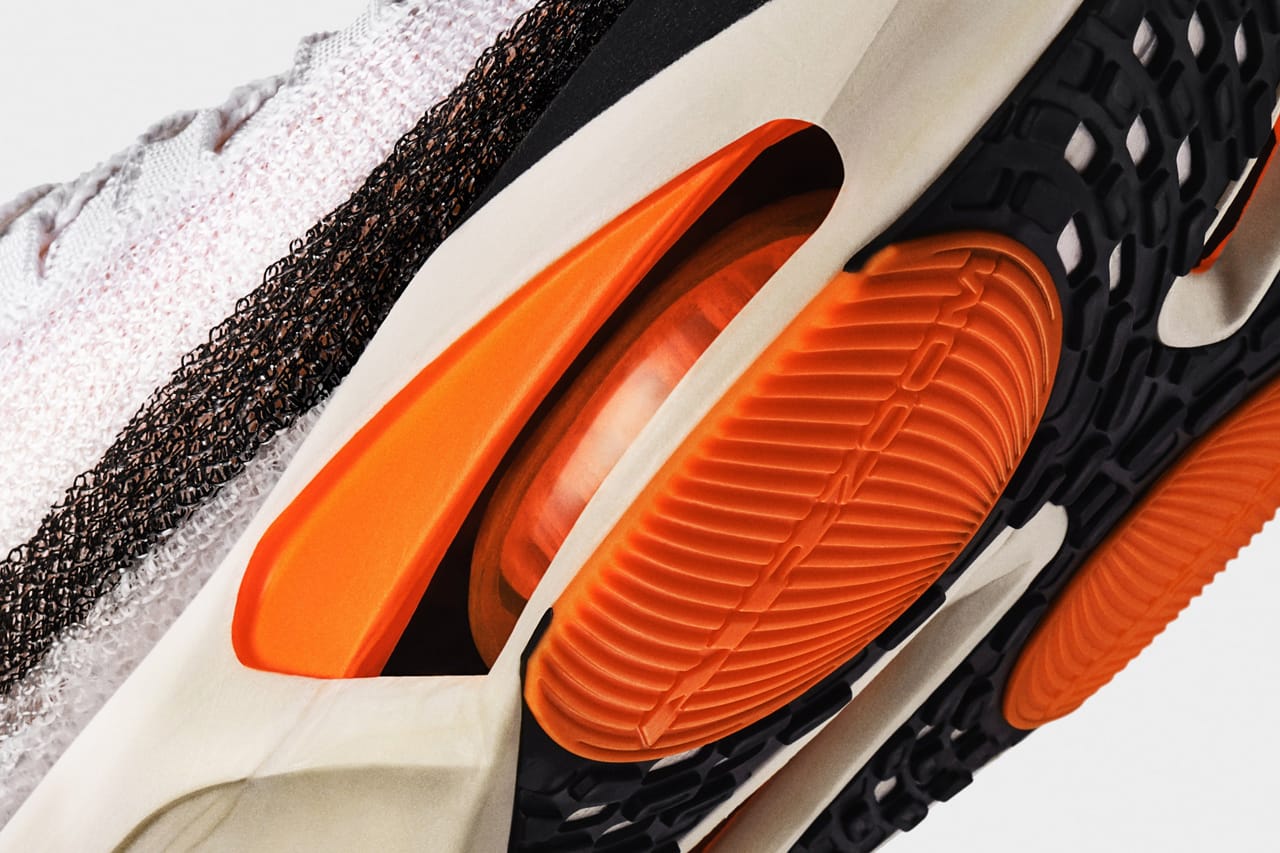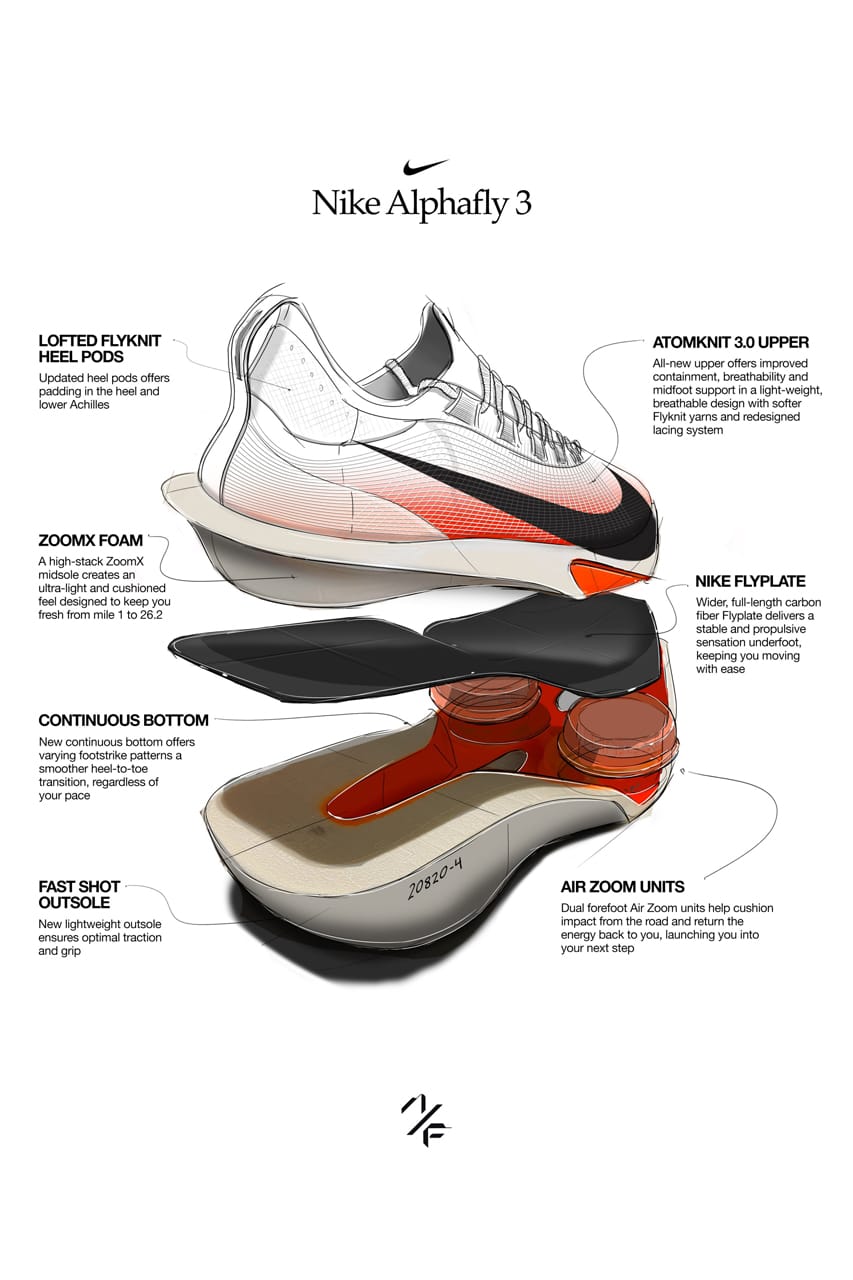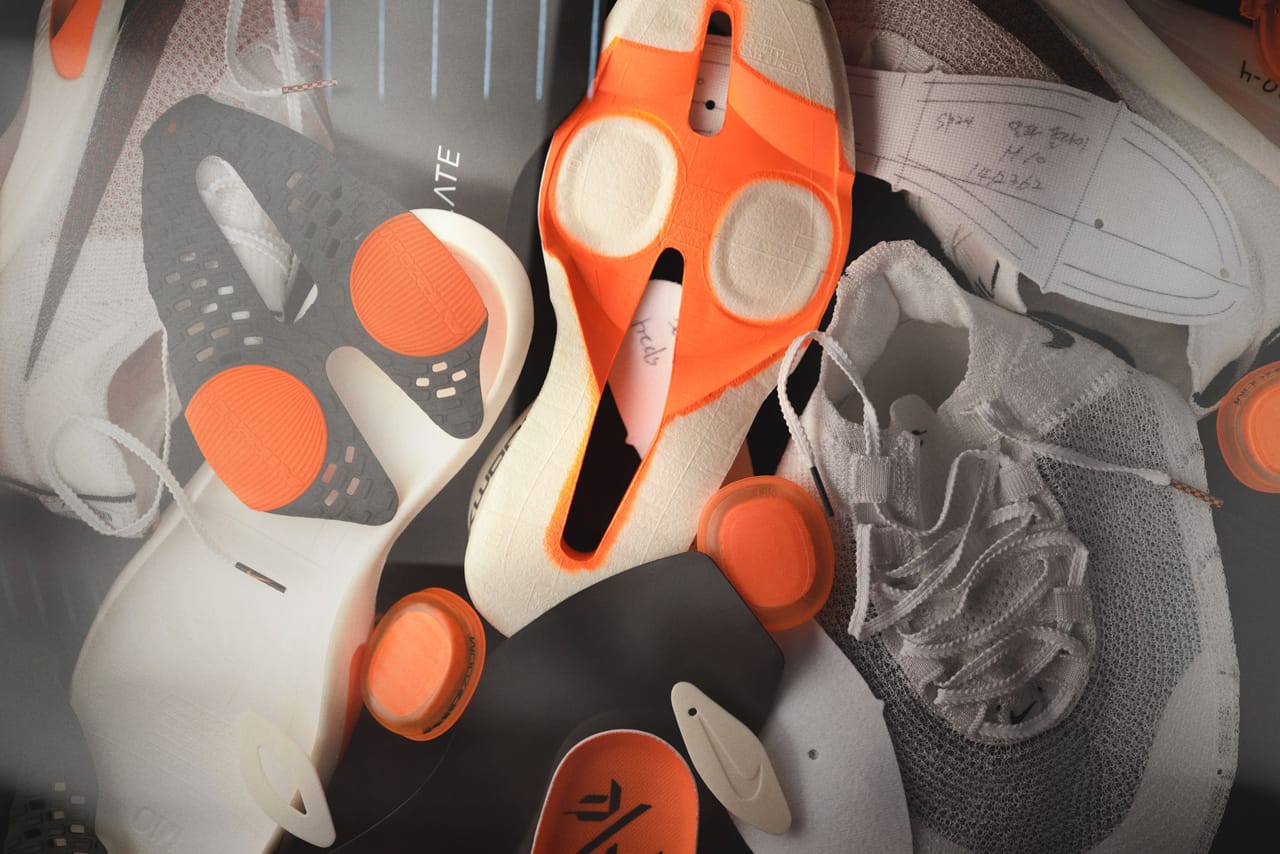As the senior product director of
Nike
So what’s the tech that makes this “super sneaker” so, well, super? Nike’s triple-threat of ZoomX foam, Zoom Air units, and a carbon fiber Flyplate, which Schoolmeester notes maximizes propulsion by storing and returning as much energy to the runner as possible. The high-stack ZoomX midsole offers ultra-light cushioning and a reductive design that both provides a one-piece heel-to-toe transition (a performance feature many runners desired from the first two iterations of the sneaker, both of which featured split midsoles) and focuses the pressure produced by a runner’s stride on the duo of Zoom Air units in the forefoot.
These Zoom Air units work in tandem with the full-length carbon fiber footplate to aid with energy return and propulsion, launching a runner into their next stride and keeping their legs fresher over the course of 26.2 miles (if you’re interested in a fully scientific breakdown, Nike’s Alphafly 3 info page page passes up nary a PhD-level description). From an on-the-ground perspective, this editor can put it to you simply: the Alphafly 3 is extremely light and has an instantly noticeable feeling of momentum. It demands you move forward, and do it fast: my first wear was a 5K PR by almost 30 seconds.
To find out more about the Alphafly 3 ahead of its release on January 4th, Hypebeast spoke to Brett Schoolmeester about everything from meeting the needs of all marathon runners — not just the ultra-fast ones — with the shoe’s design, mixing technical innovation with performance feedback, the race towards the 2-hour marathon and much more.1 of 7
Nike2 of 7
Nike3 of 7
Nike4 of 7
Nike5 of 7
Nike6 of 7
Nike7 of 7
Nike
The Alphafly 3 promises “marathon speed to all runners” in its press release. What does that mean? How do you provide that “marathon speed” to someone who has a slower pace — and therefore vastly different biomechanics — than a professional marathoner?
All of our “super shoes” are designed to provide a combination of increased propulsion and increased protection. If you think about an energy device like a coil or a battery, the amount of energy they can return is relative to the amount of energy they can store. When we create these shoes, we work with athletes at the cutting edge of the sport like Eliud Kipchoge, Kelvin Kiptum and Sifan Hassan, and the enhancements and alterations they’ve been asking for in their race day shoes, like enhanced transition, stability and comfort, have received positive feedback across the spectrum — not just from other elite marathoners, but from people who’ll run a marathon in three, four, five, or however many hours as well.
How did you meet those needs with the Alphafly 3?
Where the Alphafly 2 had a break in its midsole, the Alphafly 3 has a much more continuous bottom. That created a much smoother transition throughout the footstrike, both for elite runners and more casual runners who tend to strike on their heel and roll through. We also flushed out the midfoot with a wider last, which reduces irritation and adds more stability. Eliud Kipchoge has the most beautiful stride of any runner I’ve ever seen, but even his mechanics start to break down around the two-hour mark so he needs that stability too. Mine break down a whole lot sooner than that, as do most runners, so those benefits can be felt at two hours, at four hours, however long it takes you to go the distance. Those new benifits don’t detract from the Alphafly 3’s energy return, and the Alphafly 3 is still 15% lighter than the Alphafly 2. Reducing weight is the easiest way to increase efficiency in a runner’s locomotion. Our studies show that every 100 grams taken off a shoe’s weight increase a runner’s efficiency by 1%, so every bit counts.
What would you say the biggest shift in thinking for the Alphafly line has been since it was introduced in 2020?
Looking at the whole of the line, I’d trace it back even further, to the Vaporfly. That was a total paradigm shift, and it’s now on its third iteration, used for everything from the 10K to the marathon. Where the Alphafly fits in is that it’s a shoe designed specifically to push the bleeding edge of marathon footwear. The build kit of the Alphafly line hasn’t changed dramatically — we still use ZoomX foam, Zoom Air and our Flyplate carbon fiber plate technology — but we’ve changed how we optimize each component to work together.
“We’re delivering what we feel is the greatest marathon shoe in the world.”
So when Nike’s designers, engineers and scientists are working to optimize that balance, how do they incorporate feedback from all these different levels of runners? Is there a lot of give-and-take there?
We’re lucky that it’s not very hard [laughs]. What we hear from runners and what we see from our engineering and biomechanics data tends to go in concert. We’re very proud of this shoe because it doesn’t force anyone else to make a tradeoff — world-class two-hour marathoners and four-hour marathoners are both going to get the same great benefits. I’m also proud that it’s more durable than most race shoes. It’s not a one-marathon shoe, based off of wear tests it should last for 200-250 miles, all while holding to a similar price point as the first model [Editor’s Note: The Alphafly 3 is $285, up from the original Alphafly’s $275 MSRP]. We’re delivering what we feel is the greatest marathon shoe in the world, and we’re not demanding a vastly increased sum of money for it or telling you it’ll only last one race.
Keeping the price point mostly intact over three models is no small feat, but does Nike ever receive any trepidation or pushback from the casual runner over the price? $285 is still a handsome sum.
We feel good about offering high-performance products at all price points, from entry-level shoes up to the Alphafly 3. The way I see it for the most premium product, however, is like this. Think about someone traveling to NYC for the New York City Marathon. They’re paying for registration [Editor’s Note: 2023 NYC Marathon entry fees ranged from $255-$358], airfare, a hotel. Why wouldn’t you want to have the best possible shoe to make the best of that experience? I’m not going to make light of $285. That’s not nothing. But when you’re making the dollar commitment to get there and race — and that’s not even mentioning the four months of training — people are willing to say “hey, if I’m going to do this, I’m going to do it right.”
Nike
The first Alphafly kicked off the super shoe wave. Now that the market is much more saturated — every running brand has their own carbon-plated “super shoe” these days — does the strategy change at all?
If we were focused on what the competition was doing, we’d still be making regular racing shoes. To your point, we created this sector and that’s where we want to stay because we feel it’s the bleeding edge. We do shoe counts at all the major marathons and are happy to say that Nike has a pretty dominant lead as far as how many runners make it their brand of choice on race day, but to keep it that way we’ve got to put on blinders and keep our foot on the gas.
The natural follow-up: where do you see “super shoes” going in the next five years?
I don’t think we’ve seen the ceiling yet. This is the absolute best we can do right now, but it’s not the best ever. We’ve got great biomechanists to give us insights on how we can optimize performance, great athletes who give us direct performance feedback, great chemical engineers, mechanical engineers and designers who are always self-scouting and saying “This could be better, that could be better.” We don’t know just how super “super shoes” can get yet, and it’ll be very exciting to see where it goes.
How long do you think it’ll be before we get a sub-two-hour marathon in a competition?
Well, we do have one. We have one with maybe a slight asterisk on there [Editor’s Note: Eliud Kipchoge ran a 1:59:40 marathon on a special course in Vienna, Austria in 2019, but his effort is not recognized as a marathon world record by World Athletics due to the presence of pacemakers, delivery of hydration by bicycle and the absence of open competition. The current recognized world record is 2:00:35, set by Kelvin Kiptum at the 2023 Chicago Marathon] That proves it can be done. It’s getting real close. A lot of things will have to go right: right athlete, right day, right conditions. For our part, we feel like we have the right shoe, the best we’ve done yet.
Nike
Source: Read Full Article
